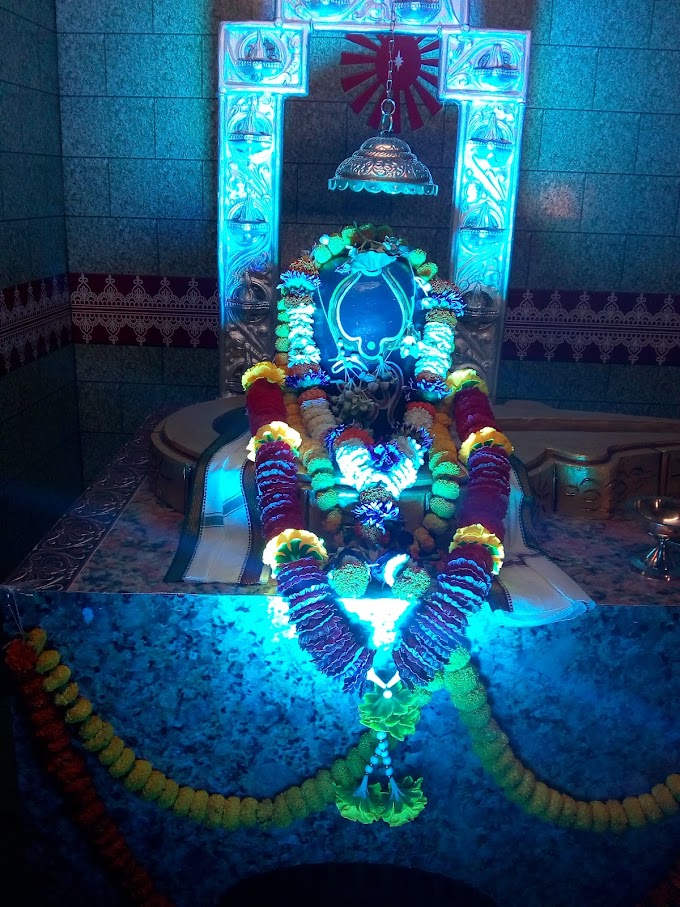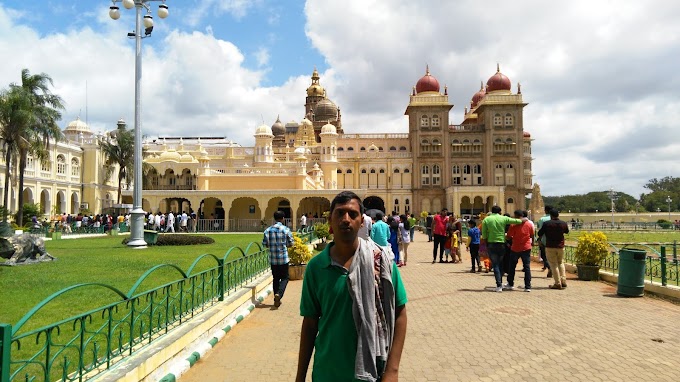MESOPOTAMIA CIVILIZATION
Mesopotamia’s most important contribution to the modern world is the city, where all the dynamic interaction could take place. some scholar
told that it is the oldest civilization among others. This is famous due to
arts, building, and technology. The mesopatamia civilization was excavated by a
team of British Archeologist in the
period of 1920 to 1930 and they discovered great temple complex, wheel, royal, tombs etc. Most attraction place of Mesopatamia is "Hanging Garden" which is the one of the Seven Wonder of the World. Some of archeologists in their book indicated that it is the first civilization of world.
MEANING
The word “mesopotamia” is formed from the ancient words “meso,” meaning "between" or "in the middle of" and the word “potamos,” meaning river. Situated in the fertile valleys between the Tigris and Euphrates rivers, the region is now home to modern-day Iraq, Kuwait, Turkey and Syria. In ancient time mesopotamia covered nearly 15,000 Sq. Km. The Mesopotamia civilization was emerged between two rivers for which it is called as Mesopotamia.
Ashurbanipal is considered to be the final great ruler of the
Assyrian empire. Ruling from 669 to 627 B.C. and he faced a revolution in Egypt
due to his brother and the king of Babylonia, whom he defeated. Ashurbanipal is
best remembered for creating Mesopotamia’s first library in which is famous in
name of Nineveh in Iraq. It is the world’s oldest known library, predating the
Library of Alexandria by several hundred years.
The Middle Kingdom (2000-1750), arising after a period of
disorder and unrest, establishes its power by restoring the patterns,
mythologies, etc of the Old Kingdom, giving those archaic forms and myths
canonical status. It is from this type of conservation of its cultural memory
that Egyptian culture derived its centuries-lasting stability and continuity.
Mesopotamia is thought to be one of the places where early
civilization developed. During that period all civilization were located near
river and It is a historic region of
West Asia within the Tigris-Euphrates river system. In fact, the word
Mesopotamia means "between rivers" in Greek. Home to the ancient
civilizations of Sumer, Assyria, and Babylonia these peoples are credited with
influencing mathematics and astronomy. Use these classroom resources to help
your students develop a better understanding of the cradle of civilization.
grades 5 - 8 subjects Anthropology, Archaeology.
GODS
The Sumerian class of Civilization were worship gods and goddess
and the main gods are An, Enlil, Enki, Ninhursag, Nanna, Uta, Inanna etc.
during the civilization period, they Art the pictures of gods over wall, stone
etc.
BABYLONIA
During the ancient period, babylonia was the famous city due to
Arts, Design, construction of building, law and main business hubs. Babylonia
was the crowed city among other and name of best business hubs it was famous.
The construction of building was very impressive and develop manner.
Babylonian thought had a considerable influence on early Ancient
Greek and Hellenistic philosophy. In particular, the Babylonian text Dialogue
of Pessimism contains similarities to the agonistic thought of the Sophists,
the Heraclitean doctrine of dialectic, and the dialogs of Plato, as well as a
precursor to the Socratic method. The Ionian philosopher Thales was fully
influenced by Babylonian cosmological ideas.
HANGING GARDEN OF BABYLONIA
In present day Babylonia is very famous due to hanging
garden. Yes, the one of the seven wonder
of world, the hanging garden was constructed during the Mesopotamia
Civilization. The technology used during the ancient time that is obliged to
them who constructed that time of unique garden. It is very difficult to build
such type of garden using mordent technology.
FUNCTION OF MALE & FEMALE
Men and women both worked the reason is that the ancient
Mesopotamia was fundamentally an agrarian society, the principal occupations
were growing crops and raising livestock”l. Other occupations included those of
the scribe, the healer, artisan, weaver, potter, shoemaker, fisherman, teacher,
and priest or priestess. Bertman writes:
LANGUAGE
There are many language used by mesopotamia but the main
languages or maximum used the language of ancient Mesopotamia were Sumerian,
Babylonian and Assyrian, Amorite.
The breakdowns of the cultural system of mesopatamia was
occurred due to a number of reasons. The demands for labor has from time to
time led to population increases that push the limits of the ecological
carrying capacity and should a period of climatic instability ensue, collapsing
central government and declining populations can occur. Alternatively, military
vulnerability to invasion from marginal hill tribes or traveling pastoralists
has led to periods of trade collapse and neglect of irrigation systems.
Equally, centripetal tendencies amongst city states has meant that central
authority over the whole region, when imposed, has tended to be ephemeral, and
localism has fragmented power into tribal or smaller regional units. These
trends have continued from that time to the present day and the said trends is
adopted by Iran
Intellectual pursuits were highly valued across Mesopotamia, and
the schools (devoted primarily to the priestly class) were said to be as
numerous as temples and taught reading, writing, religion, law, medicine, and
astrology. There were over 1,000 deities in the pantheon of the gods of the
Mesopotamian cultures and many stories concerning the gods (among them, the
creation myth, the Enuma Elish). The Mesopotamians believed that they were
co-workers with the gods and that the land was infused with spirits and demons
(though `demons’ should not be understood in the modern, Christian, sense)
It is generally accepted that biblical tales such as the Fall of
Man and the Flood of Noah (among many others) originated in Mesopotamian lore,
as they first appear in Mesopotamian works such as The Myth of Adapa and the
Epic of Gilgamesh, one of the oldest and ancient written story in the world..
The boundaries of the four natural components and associated
buffer zones provide protection against threats, such as oil exploration and
urban development. However, enhanced efforts are needed to review boundaries
and ensure that all components remain hydrologically and wherever possible
ecologically connected.
The ruler claiming that they had direct contact with the gods
was quite common throughout Mesopotamian history, most notably in the Akkadian
king Naram-Sin ( 2261-2224 BC) who went so far as to proclaim himself a god
incarnate. The king was responsible for the welfare of his people and a good
king, who ruled in accordance with divine will, was recognized by the
prosperity of the region he reigned over.
Israel's culture, including its cultic institutions and its
literature, draws on sources common to its environment. Out of her specific
cultural heritage and political-historical experience, however, Israelite
prophets, wisdom teachers, and priests developed a monotheistic system, a
unique form of religious, legal, and political thought which was to become the
fundamental creed of several subsequent cultures, including Byzantine and
Western Christendom and Islam. The Bible still retains traces of the
development of monotheism which was not instituted without a struggle against
more traditional forms of religion.
By the time Alexander the Great conquered the Persian Empire in 331
B.C. and the most of the great cities of Mesopotamia no longer existed and the
culture had been long overtaken. Eventually, the region was taken by the Romans
in 116 A.D. and finally Arabic Muslims in 651 A.D.
In this period there was a extensive use of tools and clay pots
and a specific culture begins to emerge in the productive semi-circular, stone
tools and weapons etc. that time people was known to use architectural system
and tools.
Scholar Stephen Bertman writes, “during this era, the only
advanced technology was literally 'cutting edge'” as stone tools and weapons
became more sophisticated. Bertman further notes that “the Neolithic economy
was primarily based on food production through farming and animal husbandry”
and was more settled, as opposed to the Stone Age in which communities were
more mobile.
Roman coins are everywhere resource and like the earlier clay
tablets, they represent a form of writing that can reveal many layers of
information about their makers and users. In the Roman Empire, most major
cities had their own mints and issued coinage that commemorated the emperor,
local magistrates, as well as deities or other attributes of the city. As
we shift to an electronic economy in today’s world, it is salutary to be
reminded how much information one small piece of metal could convey. Made
of silver, gold, or bronze, Roman coins have weights and denominations
(denarius, sestertius, aes, for example) that tell us about their mineral
sources and the economy. Legends and images provide art historical sources on
representations of the emperor; and the locations at which coins are found
(findspots) can reveal much about the circulation of people, goods, and money
in the ancient world. When part of a larger hoard, coins provide absolute
dates that help to build chronologies, the backbone of archaeological
discovery.
After gone some many books and internet I come to the conclusion
that Sumerian civilization was the first civilization which took form in
southern Mesopotamia around 4000 BC Or 6000 BC years ago. Therefore it the
first urban civilization.
The researchers has found wheel, a picture of boat and boat
also, some written stone, utensils, destroyed urban civilization. From a bare
picture one can come to the conclusion that the civilization of Mesopotamia was
very developed and peoples might be intelligence. They were worship gods
also.













